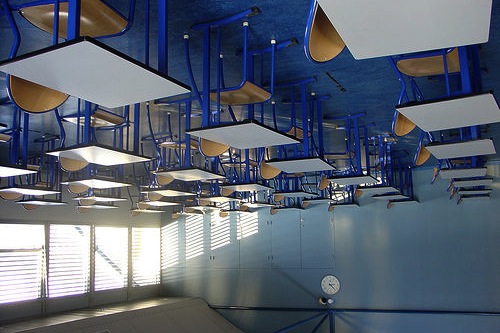
Articles abound on how traditional teaching methods deny students the chance to learn from their mistakes. But in this pandemic, when teachers are forced to engage in remote learning, they are more than ever scrutinized by parents and staff. Under so much pressure, teachers won’t dare try something new and risk making a mistake. A shame. But is the unwillingness to create a video for a flipped classroom a bigger mistake than failing at such an attempt? Let’s look at this more closely.
A traditional classroom model has the information transfer take place in class with assimilation of that information taking place outside of class. In other words, you lecture to the class and then your class applies what they learn in their homework assignments.
A flipped classroom has the information transfer take place outside of class (often through online videos) and the assimilation and application of this knowledge takes place in class. If implemented correctly, virtual learning can become more robust with an environment where students work together and they have more opportunities to solve challenging problems. What they’ve seen and heard outside of class, now makes sense in class and the instructor is there to guide them.
A classroom outside Boston
Let me tell you about a 6th grade class I visited on the East coast. The instructor had flipped his math classroom. He shared with me how he could differentiate his instruction, engage his students, and give meaningful assignments. He told me he now had more time for dynamic classroom activities. I saw how he created videos as screencasts, including himself in them as he intuitively knew that his presence helped keep his students engaged. The more outrageous and funny he could be – with costumes or jokes – the more successful were his assignments. In addition to his screencasts, he would have his students watch Elevated Math videos, especially if one of them had not completely understood his instruction. That was especially nice to see!
Flipping a classroom is much like learning to cook. At first, you will make mistakes. But don’t worry. You’ll still feed your students with needed knowledge and your struggles can actually inject more energy into the class. As you continue, you’ll get better at it. If you are not afraid of making a mistake, you will raise the level of your instruction.
The first step to flipping your classroom
Google “How to make a screencast.” Lots of instruction is available – from using a whiteboard, to setting up a camera, to making a screencast directly on your computer. The worse mistake you can make is not trying to make one.
I’ll end with a quote from Thomas Edison. He writes, “I have not failed. I’ve just found 10,000 ways that won’t work.” The good news is you won’t make that many mistakes when you flip your classroom!

Pingback: Don’t Be Afraid of Making a Mistake. Flip Your Classroom. | Elevated Math | Math and Technology in the Classroom | Scoop.it
Pingback: Don’t Be Afraid of Making a Mistake. Flip Your Classroom. | Flipped & Blended Classrooms | Scoop.it